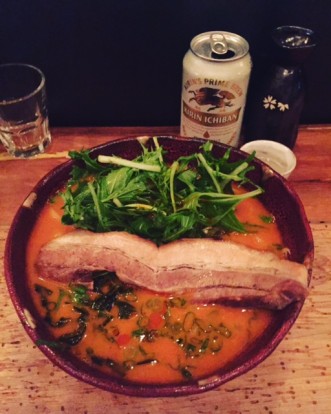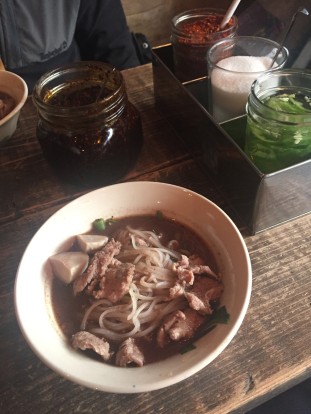International Intrigue: Ikinari Steak NYC vs. Tokyo
Unlike the first US outpost of Afuri, the Ikinari Steak that popped-up near St. Marks in that international chain mini-district held down by Ippudo and Tim Ho Wan, was almost identical to the one I visited in Shibuya, just swapping Japanese staff for locals. Oh, and also that it was at capacity while the similarly sized Tokyo branch was maybe one-third full also around 6pm on a Friday night. A line started to form at the cutting and weighing counter and a good-natured staff member who was acting as ring-master, shouted a few times, “Stand close to the wall as you can!” which definitely wouldn’t happen in Japan, though no one seemed to mind.
Four cuts of steak were offered in Japan: rib-eye, tenderloin, US Angus beef sirloin, and Japanese beef sirloin. Hamburg was also an option–hamburg steak is rampant in Japan–but maybe that doesn’t translate to the US. I chose the latter, 200 grams, and the most expensive at 10 yen per gram. The US is also using grams (though they provide a handy conversion table on the menu) and lists rib-eye, filet, sirloin, and a combo of scraps. I went with the cheapest cut, sirloin at 8 cents a gram, also 200 grams. I paid roughly the same price: $17 in Tokyo and $16 in NYC but clearly the US’s prices are higher. Both are non-tipping restaurants, though, which I love.
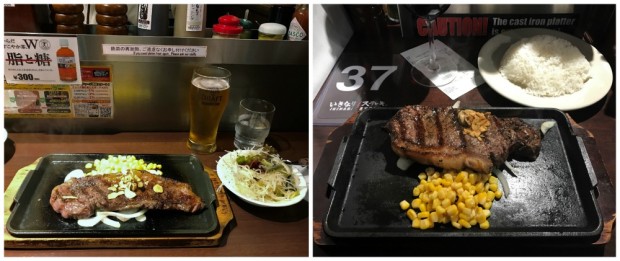
Tokyo vs. NYC
You’ll get the same corn on the side, browned garlic and butter on top, and onions underneath, which get great char as they mingle with the juices. This is not dry-aged prime steak, though it’s not quite the Tad’s (r.i.p.) of Japan either. The sirloin was not supermarket steak bland, picking up smoke from the grill, and the little rim of fat adding extra lushness (if you prefer lean, just ask the butcher to remove it). You can add garlicky soy-based “J-sauce,” garlic paste, mustard, and wasabi, which are stationed at the standing tables. I don’t recall that it was recommended you order your steak rare in Japan–there are lots of signs stating this in NYC–I ordered medium rare both times. Rice and salad (radish or green) are extra. I skipped salad this time because I don’t care about roughage, but they are selling bottled dressing at the register so I guess someone likes it.
I also love the foldable baskets for storing your coat and bag, found at Japanese restaurants everywhere, some taking the form of little hammocks adhered to the bottoms of bar stools, though there was only one allotted for my face-to-face solo standing table, and the gentleman before me had commandeered it. (I’m also in love with the current season of Baskets, just FYI. Louie Anderson is genius as Christine.)
You verbally tell the meat cutter what you want here while you brought a little wipe-off card, filled out by a server, to the counter in Japan. This wouldn’t be a bad idea in NYC since I had to repeat myself a few times and with the crowds, the staff has high potential to become overwhelmed.
I did not eat at this Bunkyo branch (there are over 100 locations in Japan) but I only just noticed the same style basket outside with what I assume to be clothing freshener. The East Village facade is more minimal, no menus out front, though there is a photo, out of frame, of the same executive chef.
I haven’t even mentioned the standing concept yet because it’s not really that weird, though Americans prefer to sit even for tapas. There’s no one rushing you, and you can have your steak re-heated if it gets cold. Of course, it’s not leisurely either, and supposedly the price reflects the high turnover. This also reminds me that the Japanese Michelin-quality standing restaurant that was promised for Manhattan in 2013 never came to fruition. Perhaps the seeming success of Inkinari Steak may pave the way for similar concepts.
Ikinari Steak * 90 E. 10th St., New York, NY


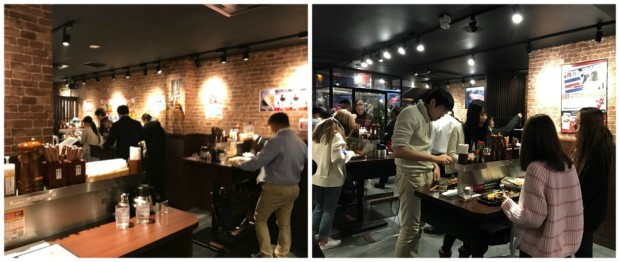
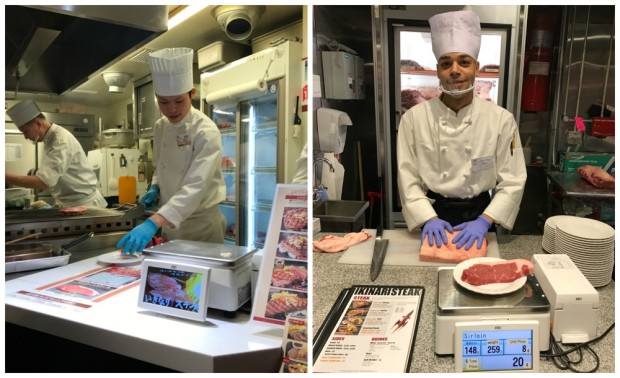
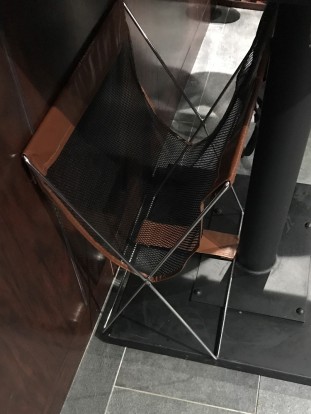
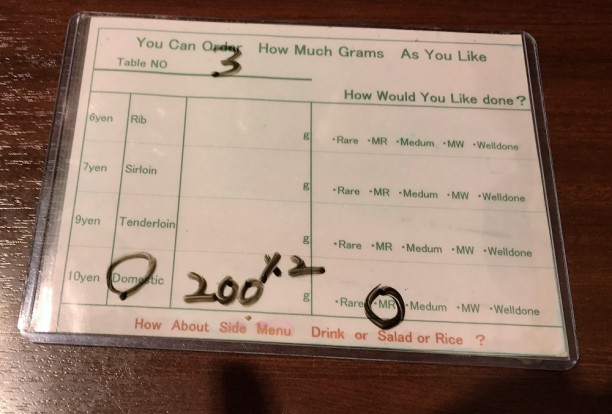
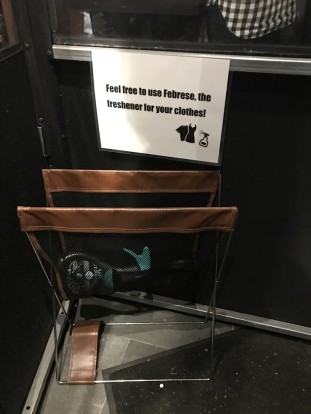
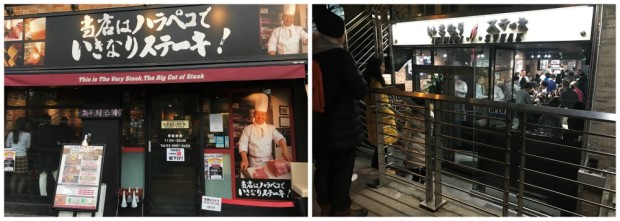
 Follow
Follow


